Disclaimer: While I recieved two HS-22's from Sofirn for demo and testing, I do no recieve any kickback from them, nor am I "sponsored" by them. I do not represent Sofirn, or vice-versa.
Headlamps are one of the favorite topics for cavers to debate (and debate, and debate, and...). Ask around and the generational consensus is that
older cavers largely miss the soft and warm glow of the acetylene flame of a carbide lamp. The warmth of color from those lights added a softness to
the inherently harsh and cold interior of cave. Carbide was almost entirely abandoned with the advent of LED lighting in favor of far brighter and longer
lasting electric light sources. Most LEDs, by virtue of their design, have a far colder color temperature and because of their relatively small size they cast harsh
shadows. The general agreement seems to be that the only lights which have approached the same flooding warmth of carbide are the European made Scurion Lights. These lights
are durable and long-lasting but heavy and very expensive. Most LED headlamp manufacturers such as Petzl, Zebra, Fenix, and Sten have defaulted now to
"floody" neutral lights where a spot beam of daylight-balanced light has a healthy spill of light around it. Missing almost entirely from the lineup: a warm
LED light with both flood and spot beam options.
Enter Sofirn. Sofirn is a China-based LED light manufacturer known for their relatively low cost, routine releases, and highly responsive customer service. For a long time
they offered the SP40A, a spot-beam LED light with a color temperature of 2700K, nearly that of carbide and basically the same as a Scurion. After several months of
pestering Sofirn, cavers succeeded in getting Sofirn to make a very warm flood light: the HS-22. Combined, the two almost exactly mimick a Scurion at less than 1/5th the cost and a
fraction of the weight. Sofirn sent me two HS-22s to demo during the National Speleological Society's 2025 Convention, and here is my review.
Sofirn's HS22 and SP40A Headlamps
Basically a sub-$100 Scurion...
Published on Tuesday, 1 July 2025. Revision 0.
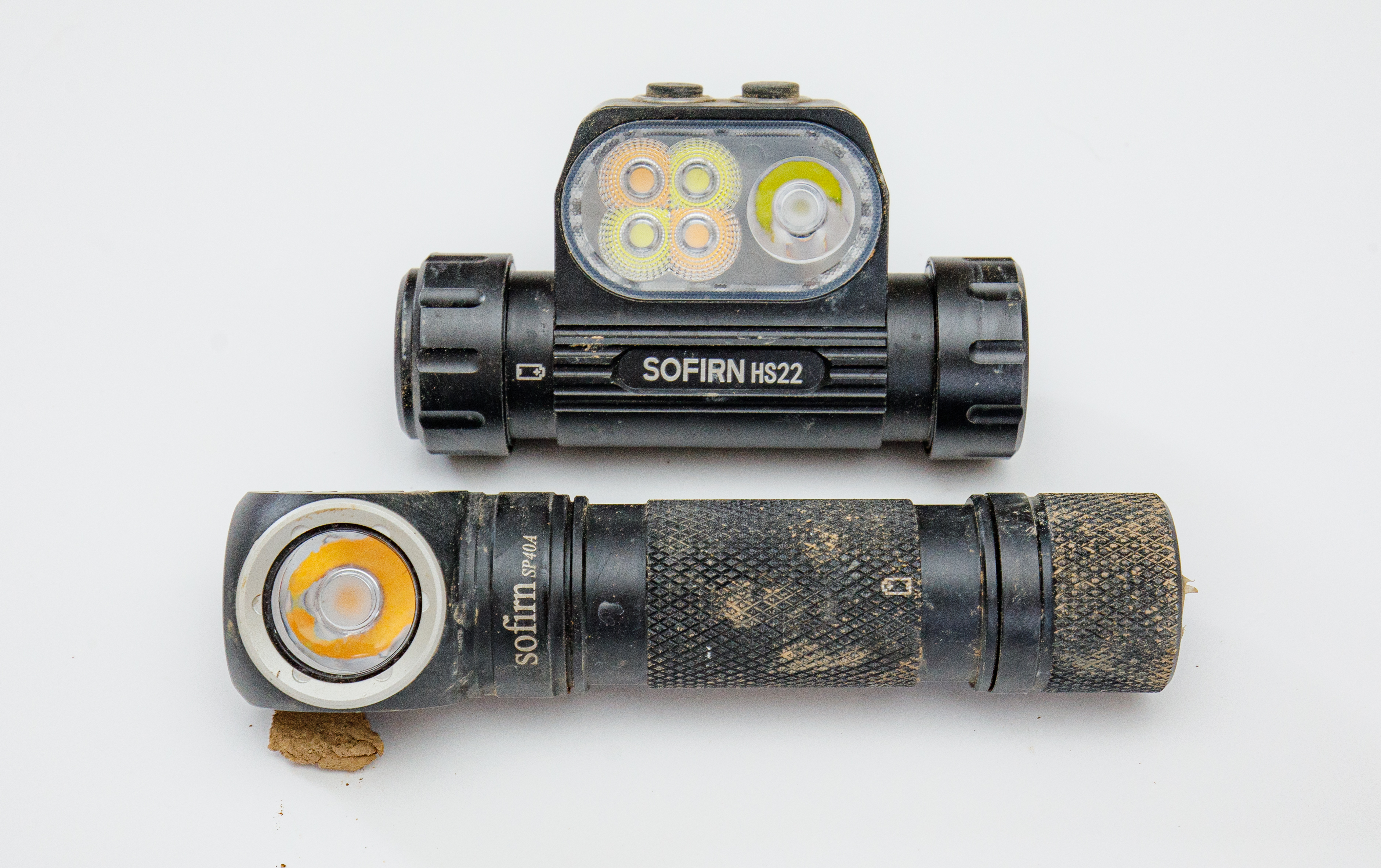
Sofirn's HS22 and SP40A Headlamps
Basically a sub-$100 Scurion...
Published on Tuesday, 1 July 2025. Revision 0.
The SP-40A
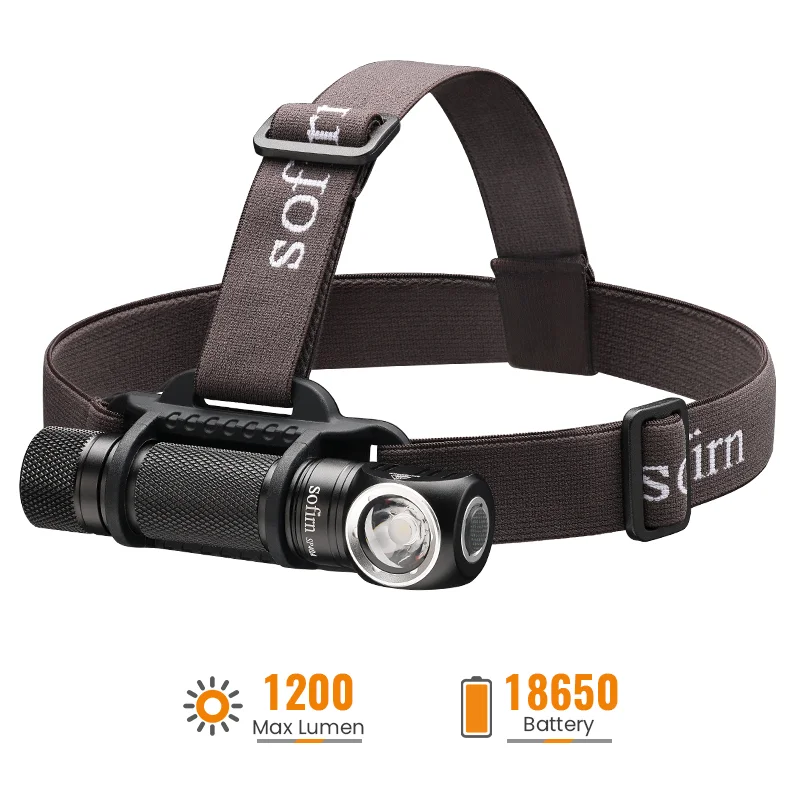
The SP40A headlamp is a Zebra-style light that offers a 2700K warm option and throws a spot beam. That's about it! It's bright, it's light, and durable. On turbo mode the
light easily has a throw of over 300 feet. The light runs on a single 18650 and has the ability to charge directly in the light using a USB-C cable. The only drawback is that it has a neodymium magnet in the tail
cap and Sofirn does not offer a non-magnetic version. If you survey, this magnetic will mess with any instruments within about 4 feet - and its nearly impossible to calibrate without mobving the lamp over 15 feet away.
Not to worry - you can easily remove the magnet. Remove the tail cap, use pliers to pull out the spring, and remove the magnet. The magnet in mine was in there pretty good, so I drilled a small hole in the cap and pushed it out and then
re-sealed it with silicone. The spring goes right back in with pliers and - voila! - you have a non-magnetic light.
The light comes with a standard elastic headband - but I mount mine differently - see below...
The light comes with a standard elastic headband - but I mount mine differently - see below...
The HS-22
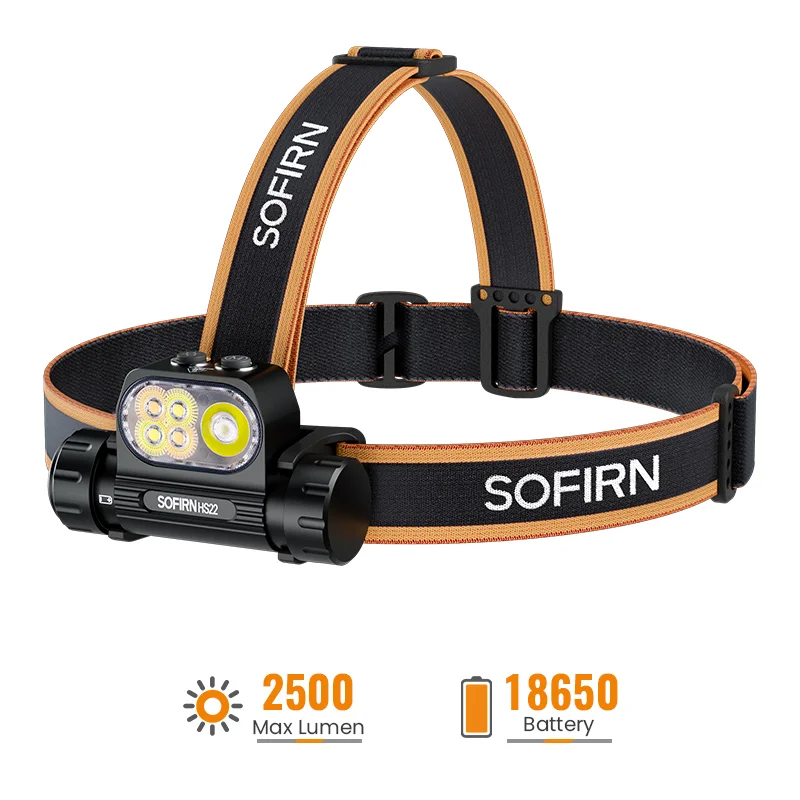
The HS-22 seems to be Sofirn's direct response to our pestering. They didn't come right out and say that, and to be honest we're mostly just taking responsibility because it feels good. Don't quote us on it.
The HS-22 is actually a combination flood and spot variable-color light capable of producing light from 2700K to 6500K - from very warm to very cold. The spot beam is only the neutral white. I was kind of surprised by this, and worried that having only two LED units would lessen the brightness. My guess is that there is not really a market for just a warm flood light, and combining it with a colder option was the compromise. My concerns were unfounded - the light is amazingly bright even with only the two warm elements running. Turbo mode is overkill in most cases, with a full 180° throw out to 200+ feet.
It's a spectacular little light - wickedly warm and very bright, and non-magnetic. It has the same USB-C charging option as the SP-40A light to recharge the single 18650 it runs on.
The HS-22 is actually a combination flood and spot variable-color light capable of producing light from 2700K to 6500K - from very warm to very cold. The spot beam is only the neutral white. I was kind of surprised by this, and worried that having only two LED units would lessen the brightness. My guess is that there is not really a market for just a warm flood light, and combining it with a colder option was the compromise. My concerns were unfounded - the light is amazingly bright even with only the two warm elements running. Turbo mode is overkill in most cases, with a full 180° throw out to 200+ feet.
It's a spectacular little light - wickedly warm and very bright, and non-magnetic. It has the same USB-C charging option as the SP-40A light to recharge the single 18650 it runs on.
Color and Light Patterns
The color of the SP-40A is 2700K (though they make options with 4000K and 5000K). The HS-22 ranges from 2700K to 6500K. The 2700K temperatures almost exactly match the color of carbide:
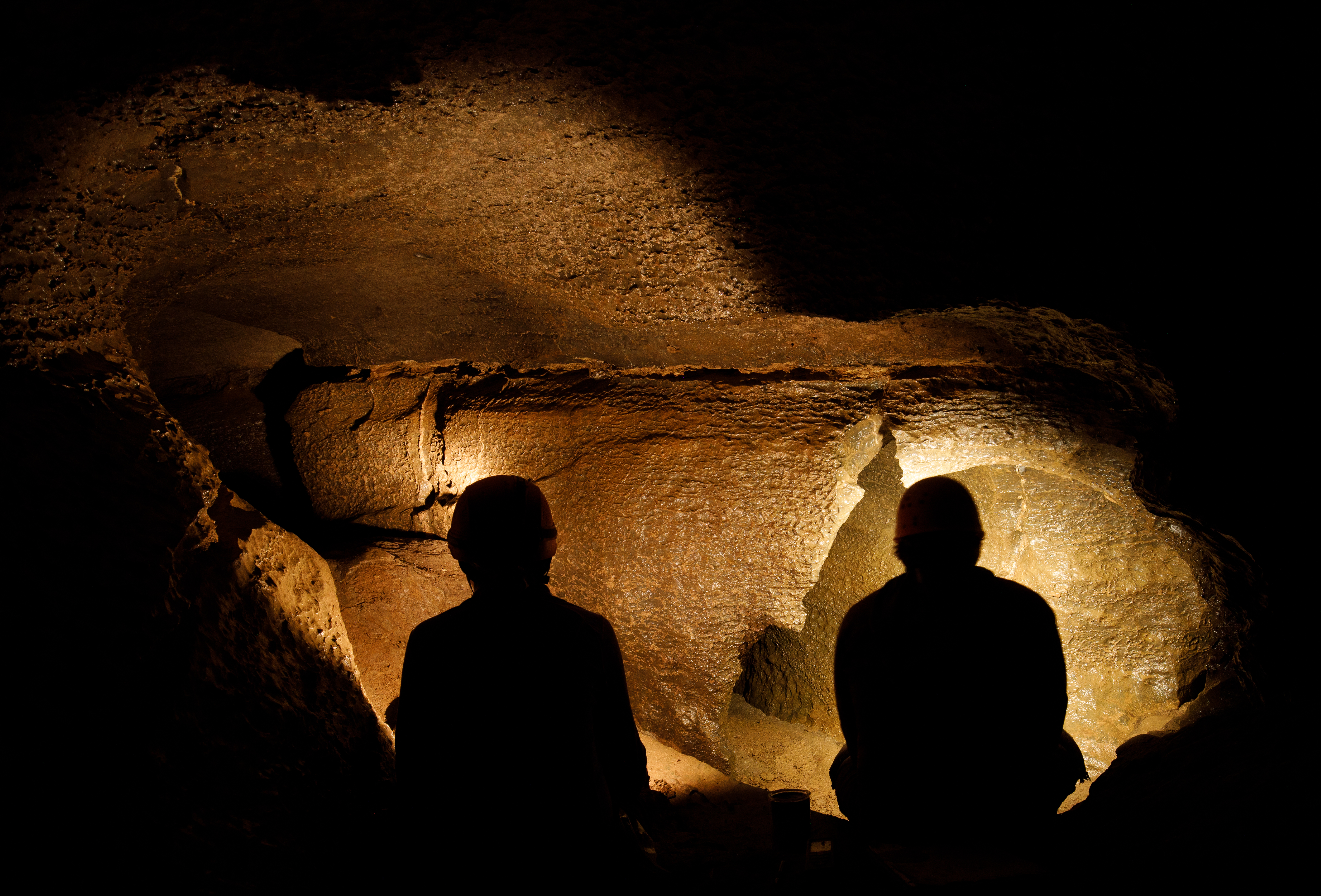
Carbide flames are slightly warmer and have a reddish tint to them, and the HS-22/SP40-A have a more neutral tint, but you really only see this in a photograph. To the naked eye the color is almost identical, it is a very pleasing warm color.
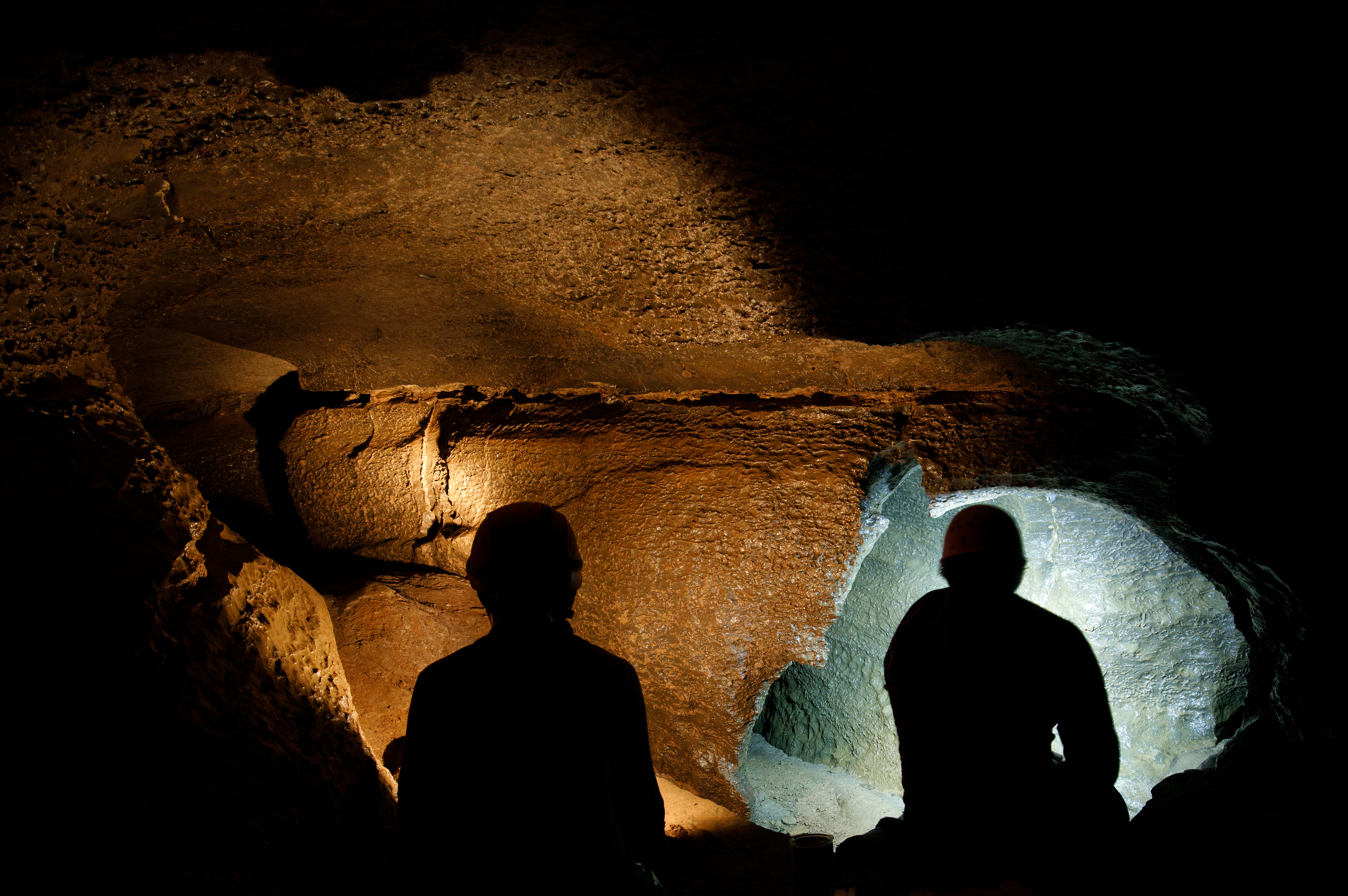
By comparison, the 6500k option is Very cold.
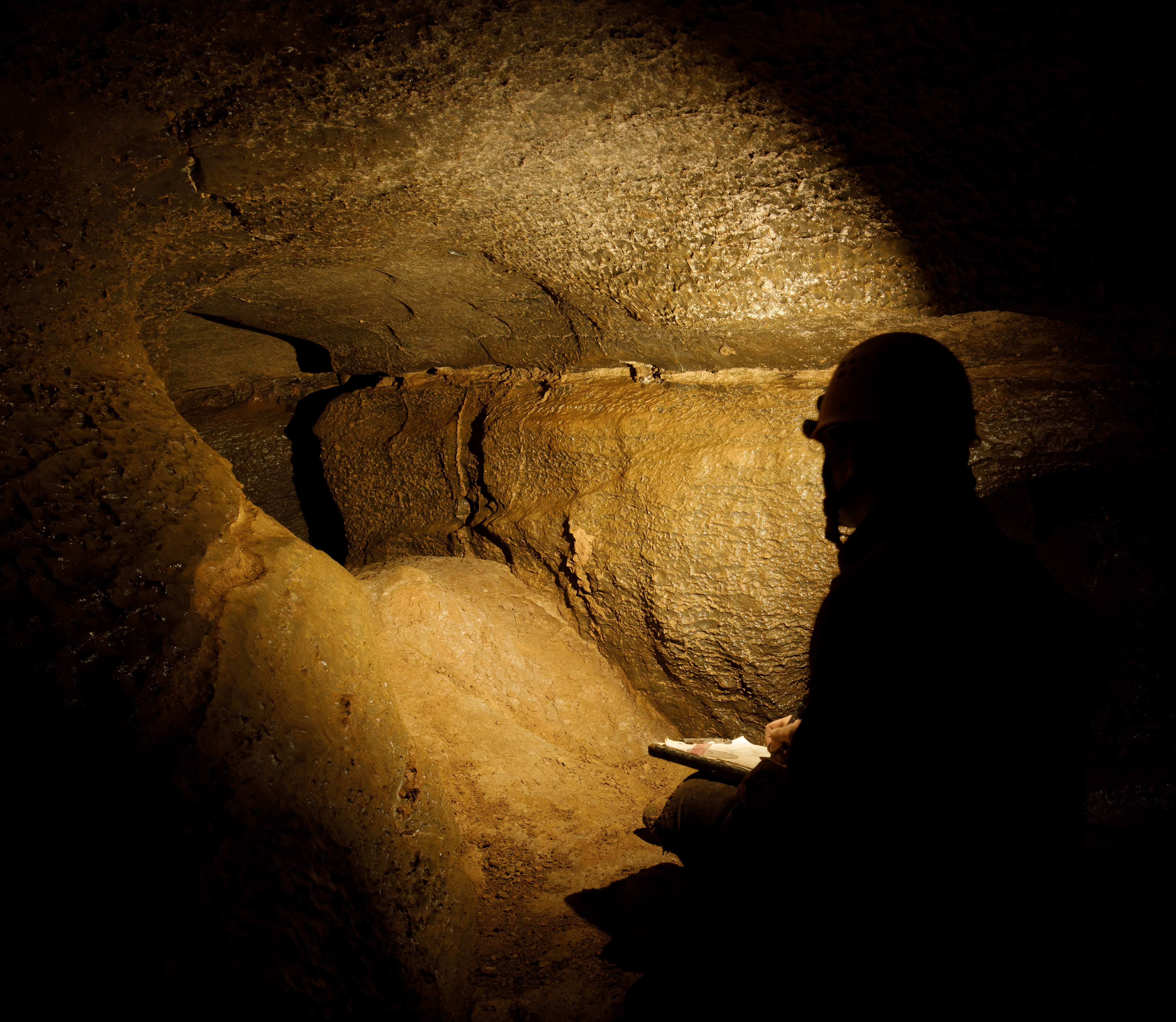
The flood mode of the HS-22 is a true flood - it's a full 180° throw with no darkness visible in the periphery.
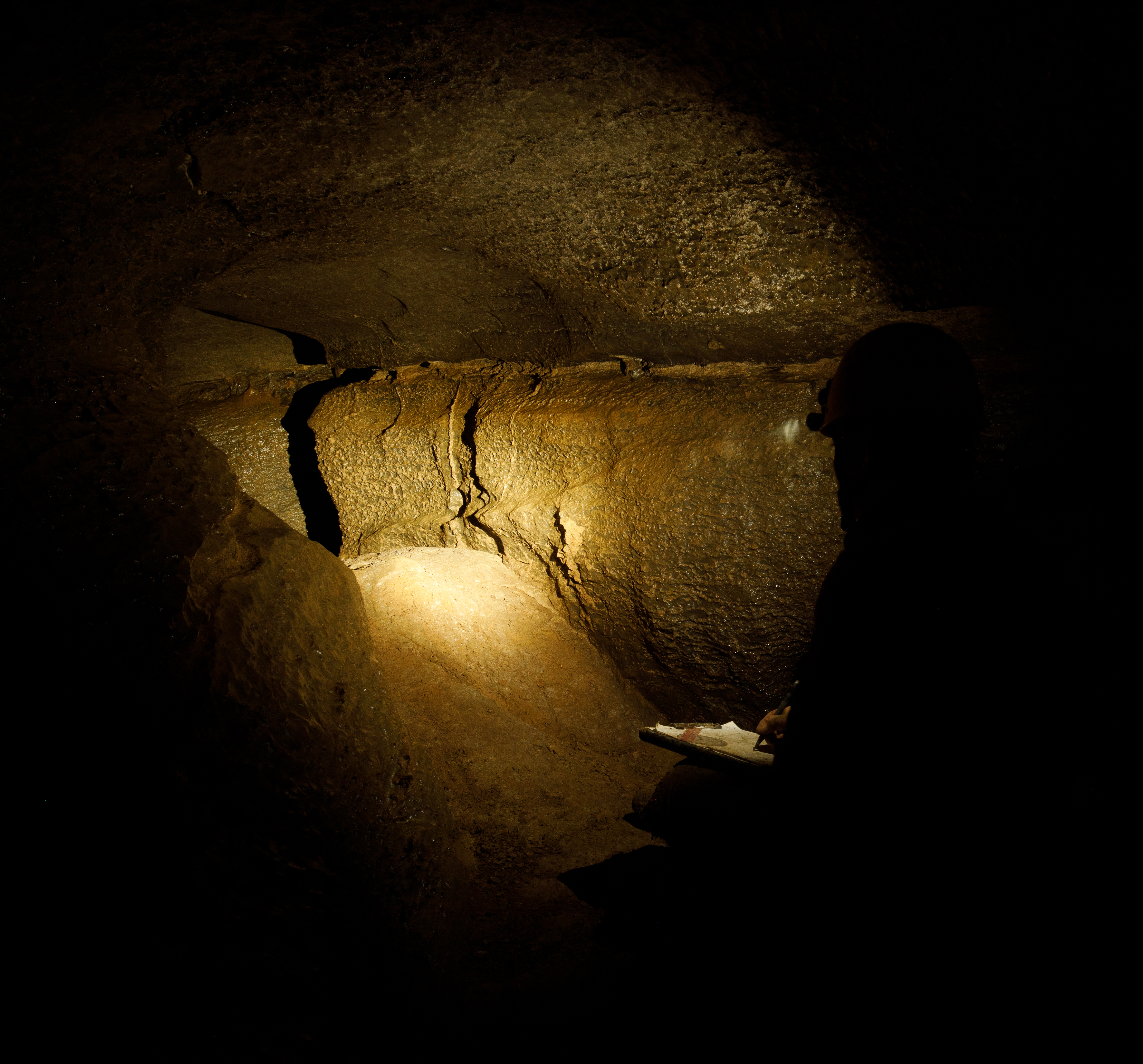
The SP40-A light has a narrower beam with some minor spill - functionally its a spot light.
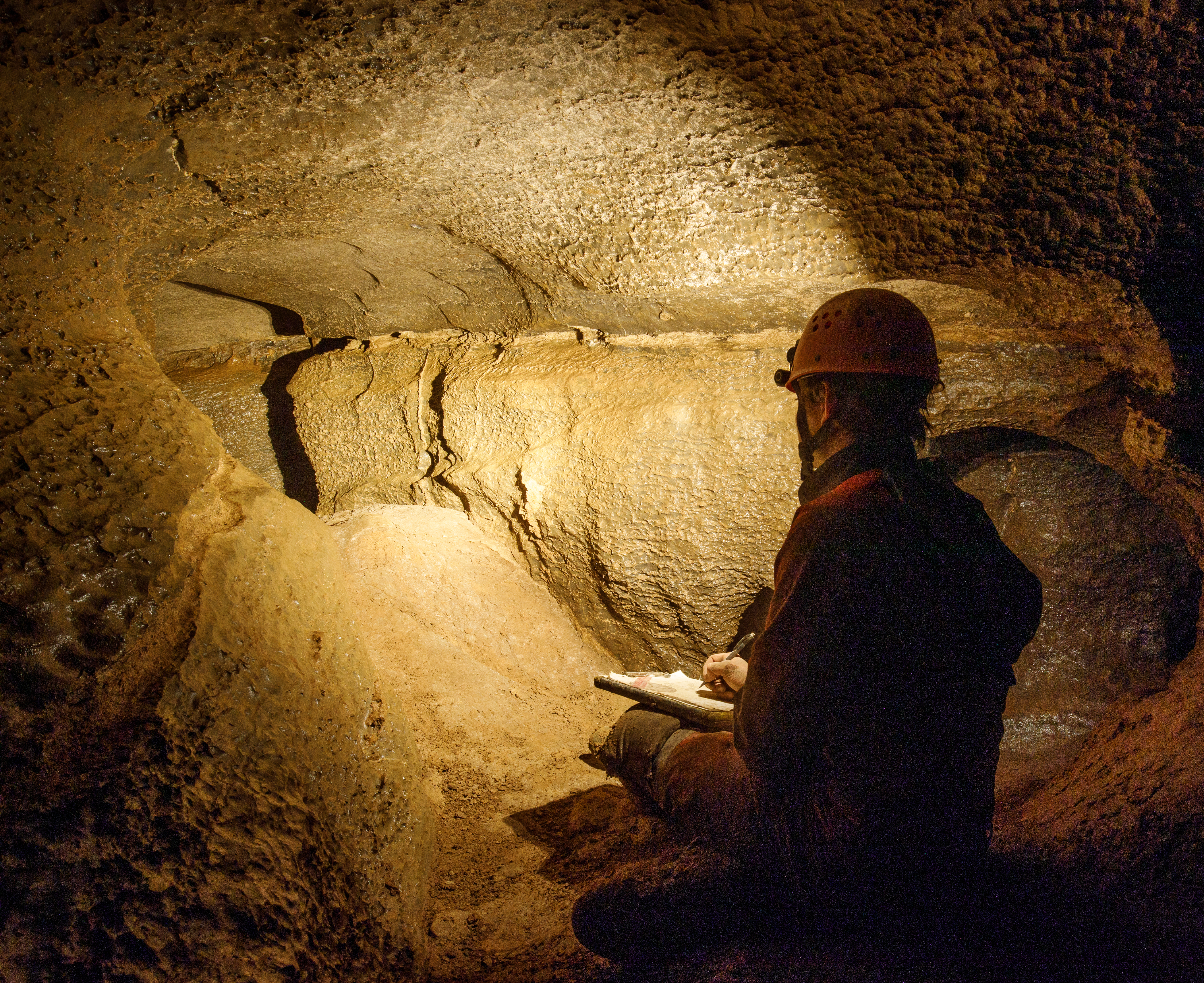
The colors between the HS-22 and SP40-A are listed as being identical, and neither my eye nor my camera saw anything other wise. With both lights on at the same time the effect is the same as the spot-flood mode on a Scurion, and arguably a bit brighter. In turbo mode the lights are extremely bright - brighter than I will ever need for seeing in a cave.
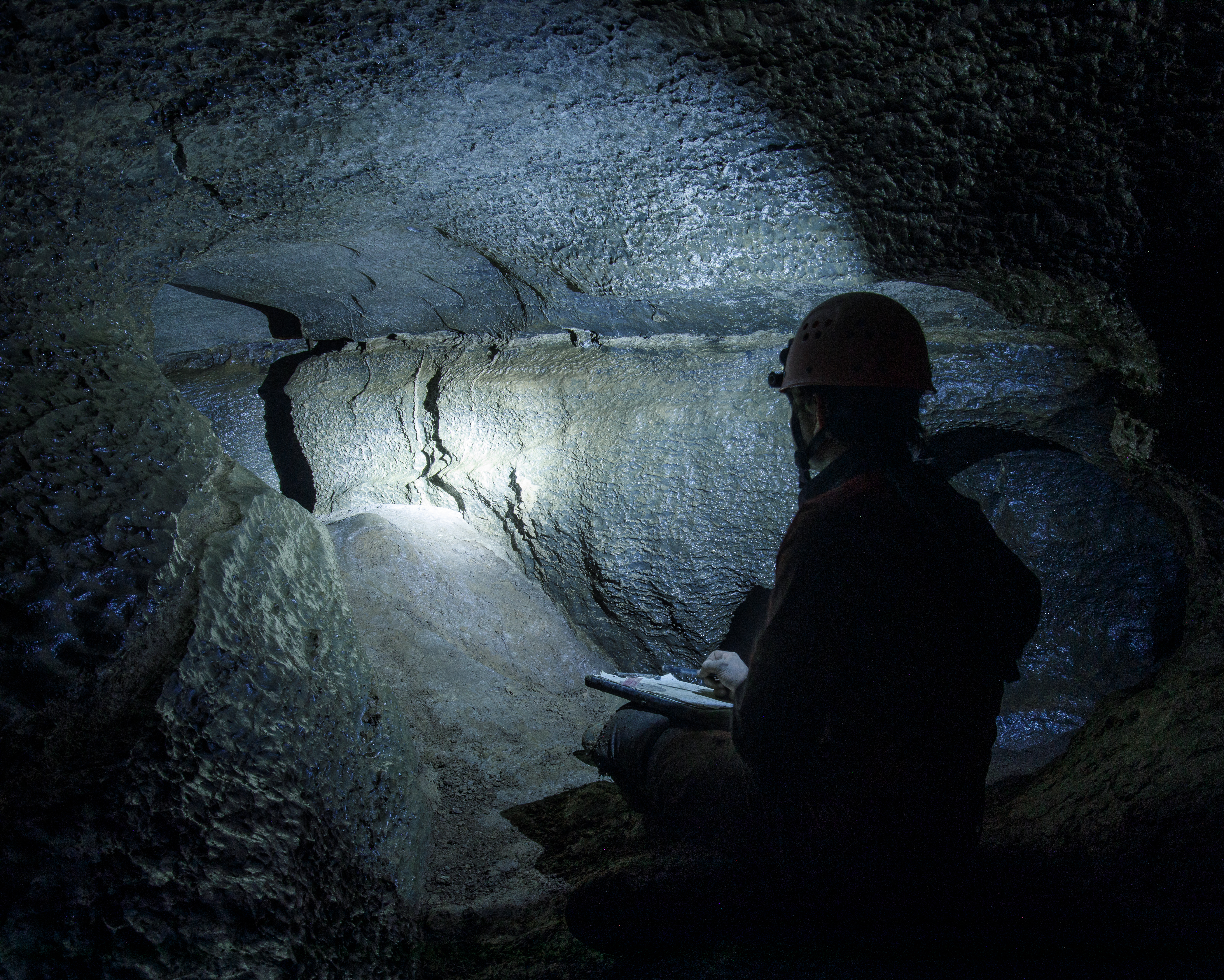
If you're someone who just loves cold lights then the HS-22 is still your light. The flood-spot combo ranges from 5000K to 6500K and is equally as bright as the warm option combined with the SP-40A. I find the warm option to be more enjoyable to use, and it doesn't blind me when someone even glances in my direction.
Mounting
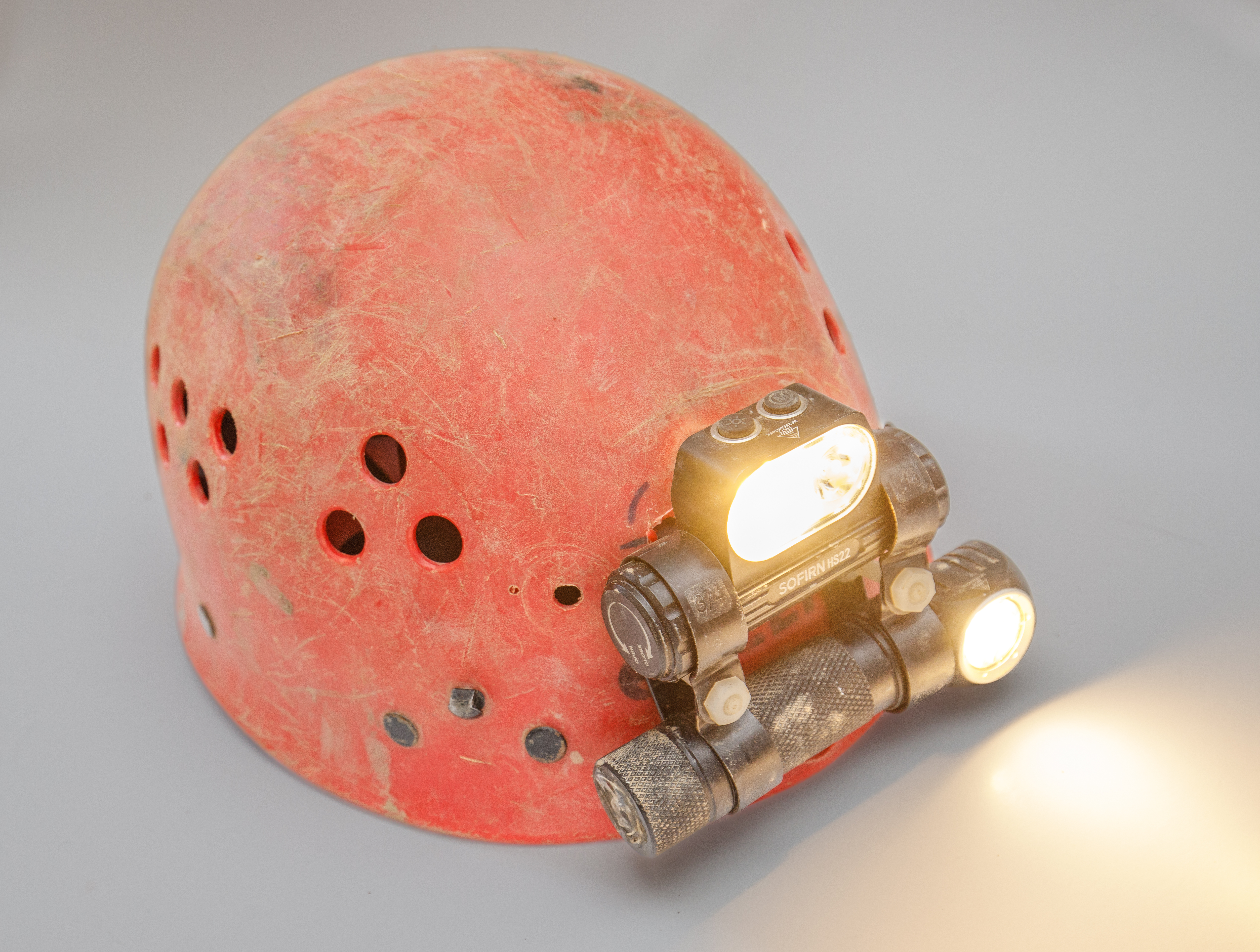
While both lights come with elastic straps, I love the minimalism of a bracket for my helmet. I went to Ace Hardware and got four 3/4in plastic hose clamps, two 10-24x1 inch nylon bolts, and four 10-24 nylon hex nuts and made a nice bracket mount.
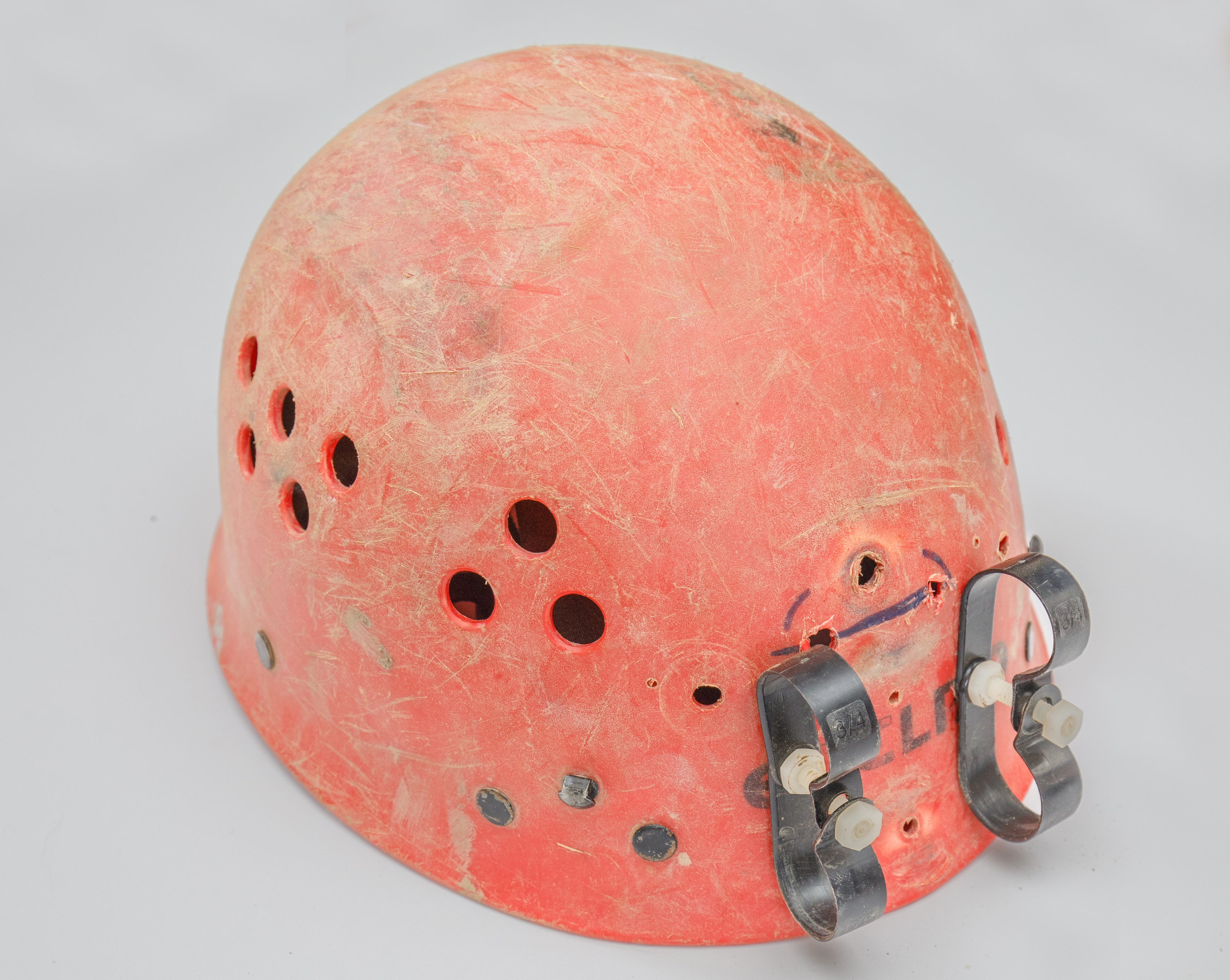
This mount is non-magnetic and holds basically any lights with a diameter of ~1 inch or less. When threaded down by hand the lights are held firmly, they do not move, but I can easily tilt them. The clamps need loosened to replace the battery in the HS-22, but both lightsd can be charged with the USB-C cables without being removed.
Battery Life
The battery life on both lights seem to be better than the Zebra's I used to have. A Zebra flood light on medium would eat up a battery every 4 hours, where as I used my HS-22 on medium or high for a total of 9 hours or more across three cave trips during the week of Convention without having an battery uses. I had a similar experience with the SP-40A. In both cases, when the battery dies the light will slowly get weaker before just simply turning off. The HS-22 will do a double flash indicating a low battery and in both lights the buttons will flash red.
Major Drawbacks
I only had one issue with both lights, and both are manageable and certainbly not deal-breakers by any means. The SP-40A comes with that super powerful magnet. I can not survey with it. The magnet must be removed to use for survey.
In the case of the HS-22 the only drawback I noted was the very complicated user-flows to set light temperature and settings. Every now and then I get stuck in a loop with a cold spot on my head trying to figure out how to get it back to warm flood. Sofirn has a flow chart in the manual and on their sales page, and given the complexity of operations I appreciate the ability to do all of this control with only two buttons. Still - it's complicated if you only want one use case. If Sofirn is still listening they'd make us cavers an option of the HS-22 that is ONLY 2700K.
In the case of the HS-22 the only drawback I noted was the very complicated user-flows to set light temperature and settings. Every now and then I get stuck in a loop with a cold spot on my head trying to figure out how to get it back to warm flood. Sofirn has a flow chart in the manual and on their sales page, and given the complexity of operations I appreciate the ability to do all of this control with only two buttons. Still - it's complicated if you only want one use case. If Sofirn is still listening they'd make us cavers an option of the HS-22 that is ONLY 2700K.
Conclusion
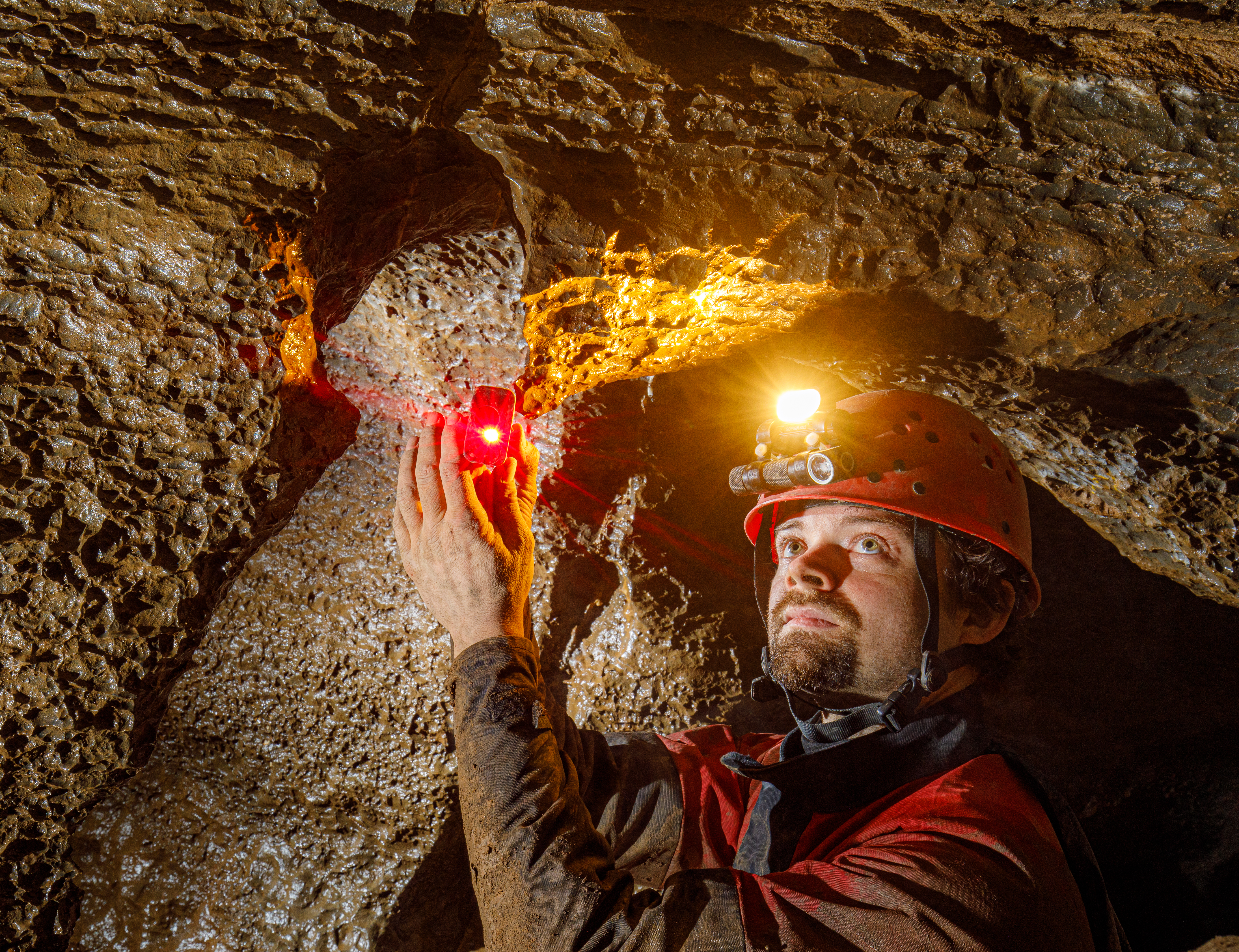
In short: I love these lights. Hope and I each have a set, and I plan on getting more of them. They have the perfect light pattern, they are reasonably priced, and work great underground. I used both in McFails Cave doing photography work in Coeyman's Dome and the warm spots cut right through the dense fog and mist. The ability to change color temprature cam in handy when trying to balance the light for a photograph.
I highly reccomed them to any caver interested in a warm light option that rivals (exceeds?) the Scurion.
I highly reccomed them to any caver interested in a warm light option that rivals (exceeds?) the Scurion.